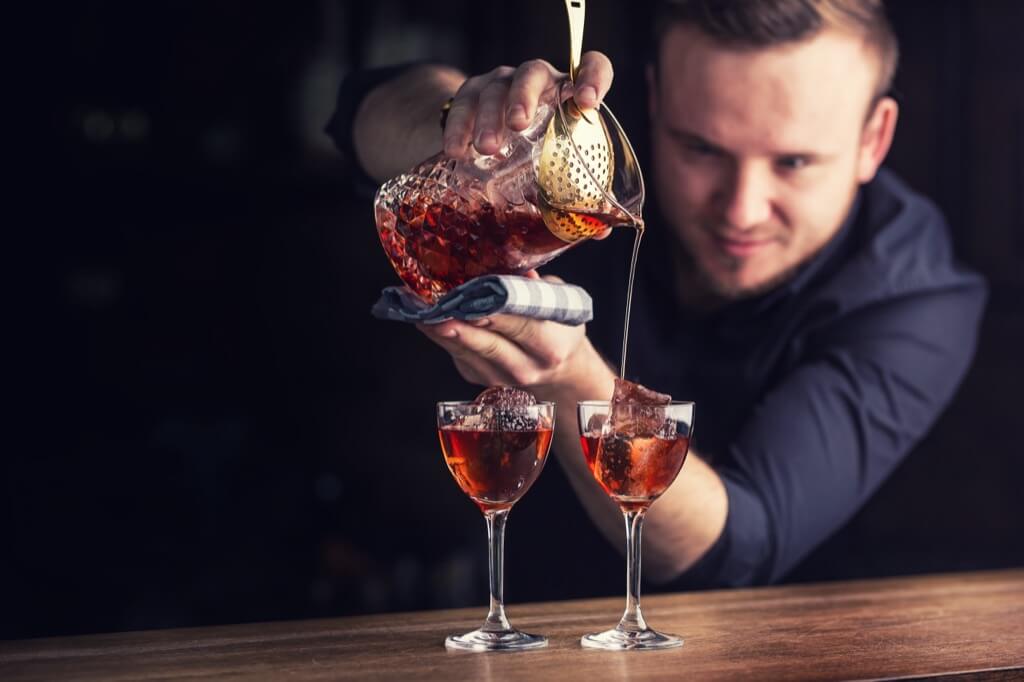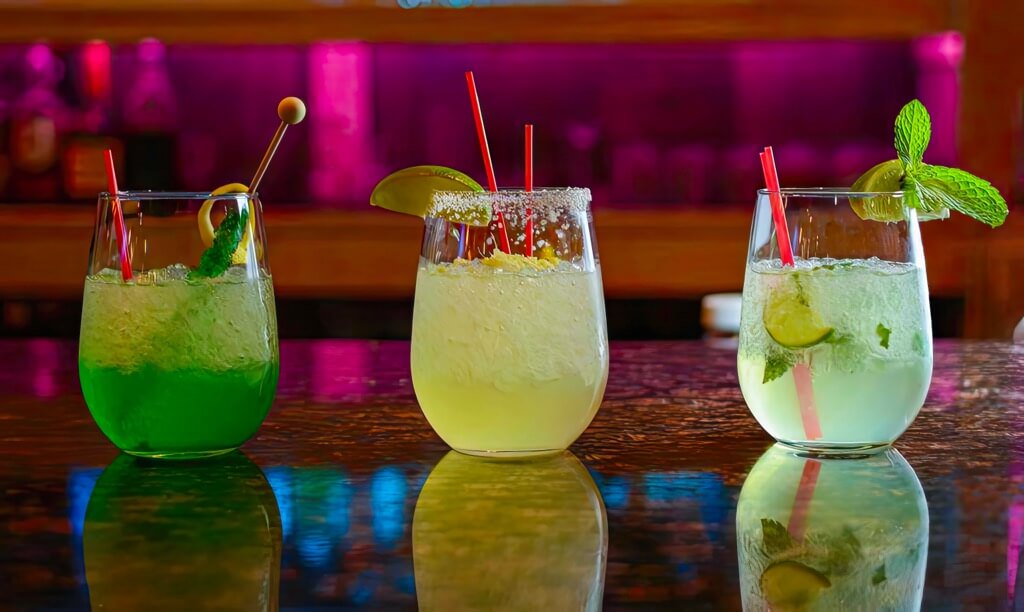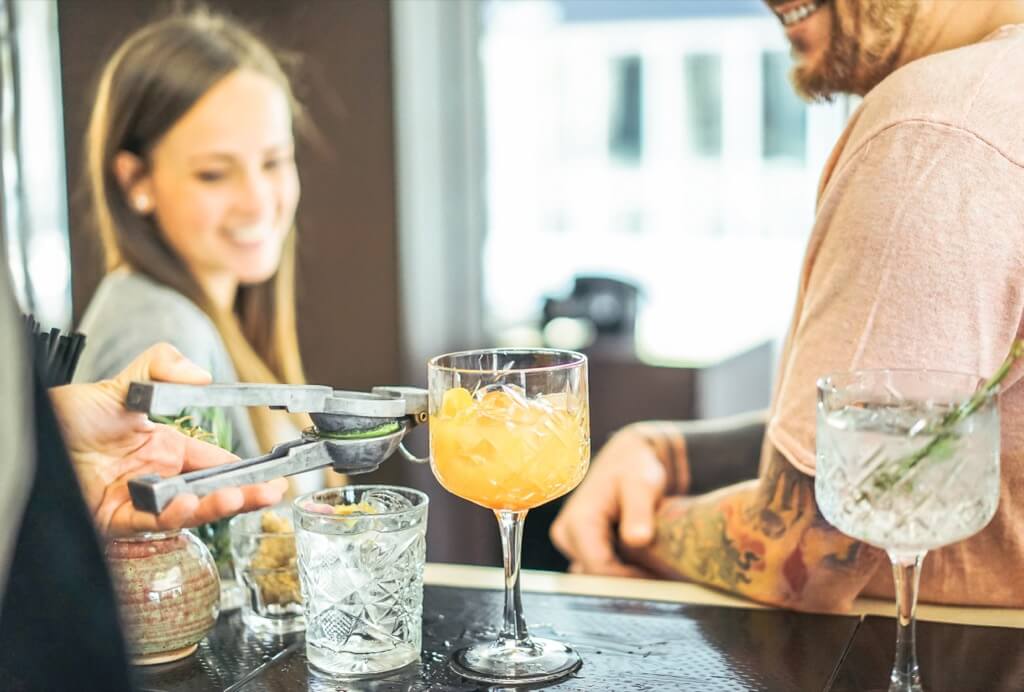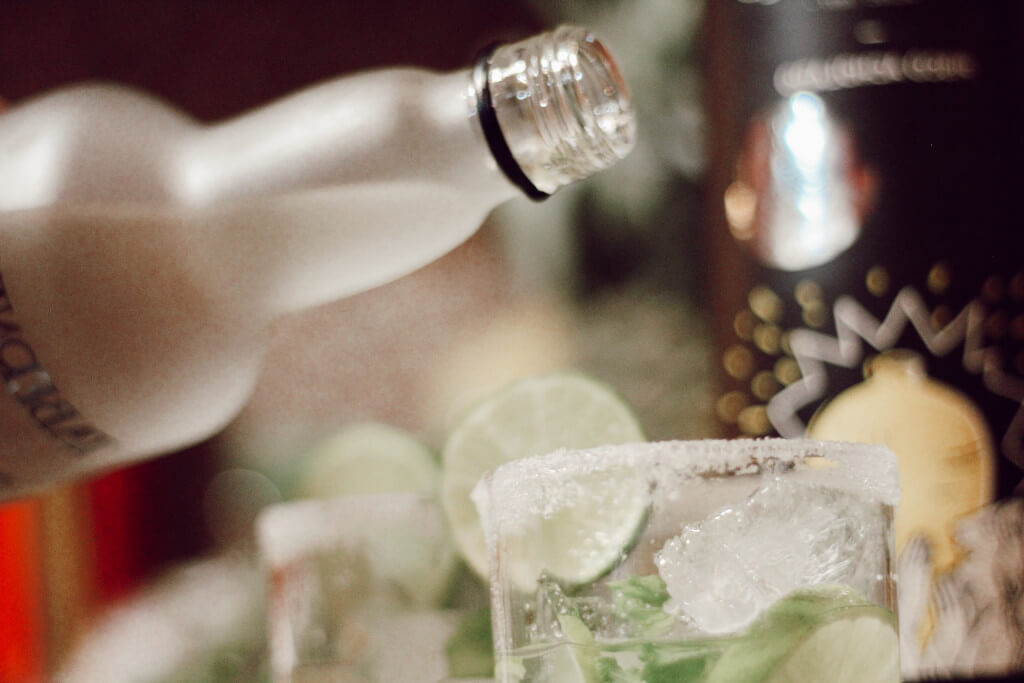High-proof spirits, particularly navy strength gin and overproof rum, opens up an opportunity to understand what they have to offer over their potency. Understanding how to use their strengths can elevate your cocktail experience, offering depth, complexity, and a touch of audacity to your drink-making repertoire.
What Is an Over-Proofed Spirit?
In today’s cocktail culture, overproof spirits—those with an alcohol by volume (ABV) higher than 50% (100 proof)—have established a distinct place. This is a change from the past, when potent, high-proof products were rare and much sought after. As a result of a trend toward more daring and adventurous drinking, overproof rum and navy strength gin are now highly regarded for their exotic flavors and adaptability.
How To Deal With Overproof Spirits

The key to making the best of overproof spirits lies not in their power but in understanding their unique qualities and how they can enhance a cocktail.
Here are some practical tools and tips to help you harness their potential and seamlessly integrate these potent libations into your drink-making arsenal:
Dilution
The higher alcohol content means that these spirits can withstand more dilution, allowing for a balanced cocktail even as the ice melts. Experiment with dilution by starting with less mixer than you might with a standard-proof spirit, then adjust to taste. This careful calibration ensures that the spirit’s character shines through without overwhelming the drink.
Flavor Pairing
Overproof spirits pack a punch in the flavor department, making them ideal candidates for bold and complex cocktails. Consider the spirit’s tasting notes and pair them with ingredients that complement or contrast these flavors. For navy strength gin, botanicals like juniper and coriander can be balanced with citrus or herbal notes. For overproof rum, its rich molasses and spice notes pair well with tropical fruits, creamy coconut, or sharp ginger. This thoughtful pairing enhances the overall drinking experience, allowing each component to play its part.
Use The Right Ice
When mixing cocktails using overproof alcohol, the ice you choose can have a big impact. The rate of dilution is reduced and the drink’s strength is maintained for longer when larger ice cubes or spheres melt more slowly. If you want to savor the spirit’s subtle nuances gradually, this is ideal for sipping cocktails. In contrast, crushed ice offers rapid cooling and dilution, ideal for tiki cocktails where a balance of flavors is key.
Take it Easy At First
For those new to overproof spirits, a gradual introduction might be the way to go. Begin by using these spirits as a secondary component in cocktails, perhaps in a split-base drink where an overproof spirit is paired with a lower-proof counterpart. This approach allows the overproof spirit to contribute its unique flavor and texture without dominating the drink, making it more approachable for those unaccustomed to its intensity.
Temperature
To make an overproof spirit more drinkable and bring out its subtler tastes, chill it before mixing. This will also lessen the spirit’s alcoholic bite. This is especially helpful in drinks where the spirit takes center stage, such martinis and negronis.
Fat Washing and Infusions
For the adventurous mixologist, overproof spirits offer a fantastic base for fat washing or infusions. Their high alcohol content allows them to effectively bring out the flavors of other components, such as the smokiness of bacon in a bourbon that has been fat-washed or the zest of citrus peels in a gin that has been infused. These techniques offer a plethora of flavor options, enabling the creation of one-of-a-kind drinks.
Misconceptions About Using Overproof Spirits in Cocktails
- Only for Background Enhancement: Many believe overproof spirits are just for adding a kick to drinks without influencing flavor. However, they bring much more to a cocktail than just strength. For example, overproof rum can transform a simple Daiquiri into a rich, full-bodied experience, demonstrating its capacity to enhance both taste and aroma.
- Not Suitable as Primary Spirits: There’s a common misconception that overproof spirits should not be used as the main ingredient in cocktails. On the contrary, drinks like a Whiskey Sour or a Fitty-Fitty Martini gain a new layer of complexity and a richer mouthfeel when made with an overproof whiskey or gin, proving these spirits can be the star of the show.
- Overwhelms Other Ingredients: Some might think that overproof spirits will overpower other components in a cocktail. Yet, when used thoughtfully, they can balance and complement other flavors. For instance, the robust nature of navy strength gin can accentuate the herbal notes in a Last Word cocktail, without overshadowing the delicate balance of maraschino, Chartreuse, and lime.
- Limited to Certain Cocktail Types: It’s often assumed that overproof spirits are only fitting for heavy, bold cocktails. However, they’re surprisingly versatile. A navy strength gin can be just as at home in a light, refreshing Tom Collins as in a potent Negroni, illustrating the spirit’s adaptability across a range of cocktail styles.
- Difficulty in Balancing Flavors: The fear of not being able to balance the potent flavors of overproof spirits might deter some from using them as bases. Yet, with proper technique and understanding of the spirit’s profile, cocktails like an overproof Rum Punch or a gin-based French 75 can achieve perfect harmony, showcasing that balance is indeed achievable.
Overproof Rum Is The Tiki Staple

An intriguing prism through which to examine the function of overproof alcohol in contemporary cocktail making is the Tiki culture, with its exotic mythology and lively aesthetic. Tiki bars and cocktails, which originated in the middle of the twentieth century and fused Polynesian and Caribbean flavors, came to represent an ideal of escape in the popular imagination. Rum, and more specifically, overproof rum, is central to this alluring universe since it is essential in making the complex and robust cocktails that characterize the Tiki experience.
Rums with alcohol by volume (ABV) levels that are over 50% are renowned for adding a level of complexity to Tiki drinks that is unmatched by spirits with lesser proof levels. Rum isn’t only used to pack an alcoholic punch in Tiki culture; it also adds molasses, spice, tropical fruit, and a concentrated essence of sugarcane roots to drinks. The characteristic Tiki mixology features this luscious profile of flavors, which serves as an ideal counterpoint to the sourness of citrus liquids and the sugar of syrups.
The Art of the Float
One should not overlook the dramatic flair of the float in cocktails. Adding a layer of overproof rum atop your Piña Colada, for example, not only infuses the drink with an extra kick but also introduces a nuanced flavor that complements the cocktail’s tropical notes. This technique underscores the spirit’s versatility, proving that a thoughtful touch of overproof spirit can elevate a drink from ordinary to extraordinary. If anyone is kind enough to ask you if you’d like a shot of overproof rum to crown your Piña Colada, the answer is “yes.”





